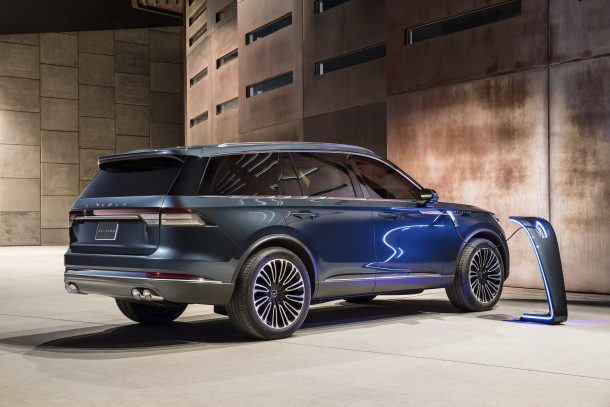MPG Figures Are In for Ford's Greenest Utility Vehicles

The Mustang Mach-E isn’t yet available for public consumption, leaving a trio of hybrid SUVs as the brand’s electrified vanguard. For 2020, the Escape returns to its hybrid past, joined by the newly electrified Explorer and its plug-in Lincoln Aviator twin.
EPA figures have been revealed for all of these beasts, so let’s take a look at what gas savings that additional expenditure can get you.
The hybrid Escape utilizes Ford’s venerable 2.5-liter four-cylinder; an Atkinson-cycle unit in this guise. Mated to the four-banger is an electric motor juiced by a 1.1 kWh battery pack. Combined output is 200 horsepower, with output funnelled to the drive wheels through a continuously variable automatic.
A plug-in hybrid variant due next year will surely up the model’s green appeal, but for now it’s your only fuel-sipping choice (barring the 1.5-liter three-cylinder base model). In front-drive form, the Escape Hybrid earns an EPA rating of 44 mpg city, 37 mpg highway, and 41 mpg combined. Saddle the model with all-wheel drive and the figures drop slightly to 43/37/40.
In comparison, the gas-only three-cylinder Escape returns 27/33/30 in front-drive guise, which is considerable in its own right. Previously rated, the 2020 Explorer Hybrid doesn’t crest the 30 mpg mark; it’s thirst comes in at 27/29/28 for the front-drive model. Shave off 3 mpg to get the AWD stats.
Moving far up the MSRP ladder lies the Aviator, which opts for potency and panache with its hybrid offering. With 494 hp and 630 lb-ft of torque on tap, the Aviator plug-in is a green hot rod that demands big bucks. Exclusivity is provided by having the plug-in Explorer relegated to the overseas market.
According to the EPA, the electrified Aviator — available only with AWD — returns 23 mpg when the model’s 13.6 kWh battery pack is kept in reserve, pushing the twin-turbocharged 3.0-liter V6 to the forefront. Operating as a conventional hybrid, the Aviator bests its gas-only stablemates by 2 or 3 mpg, depending on whether the challenger is FWD or AWD.
With the electric reserves brought online, that figure rockets to the equivalent of 56 mpg (MPGe) — not bad for a midsize, high-zoot utility vehicle. It may take a while to recoup the added sticker via gasoline purchases, however, as the cheapest Aviator hybrid starts just a tick below the $70k marker.
[Images: Ford]

More by Steph Willems
Latest Car Reviews
Read moreLatest Product Reviews
Read moreRecent Comments
- Brendan Duddy soon we'll see lawyers advertising big payout$ after getting injured by a 'rogue' vehicle
- Zerofoo @VoGhost - The earth is in a 12,000 year long warming cycle. Before that most of North America was covered by a glacier 2 miles thick in some places. Where did that glacier go? Industrial CO2 emissions didn't cause the melt. Climate change frauds have done a masterful job correlating .04% of our atmosphere with a 12,000 year warming trend and then blaming human industrial activity for something that long predates those human activities. Human caused climate change is a lie.
- Probert They already have hybrids, but these won't ever be them as they are built on the modular E-GMP skateboard.
- Justin You guys still looking for that sportbak? I just saw one on the Facebook marketplace in Arizona
- 28-Cars-Later I cannot remember what happens now, but there are whiteblocks in this period which develop a "tick" like sound which indicates they are toast (maybe head gasket?). Ten or so years ago I looked at an '03 or '04 S60 (I forget why) and I brought my Volvo indy along to tell me if it was worth my time - it ticked and that's when I learned this. This XC90 is probably worth about $300 as it sits, not kidding, and it will cost you conservatively $2500 for an engine swap (all the ones I see on car-part.com have north of 130K miles starting at $1,100 and that's not including freight to a shop, shop labor, other internals to do such as timing belt while engine out etc).



































Comments
Join the conversation
No word on the Corsair PHEV? Very excited about that.
Regarding the information on the Lincoln, and in general, MPGe is an absolutely useless metric. It is emission-based given some obscure basis of where the electricity comes from, and has nothing to do with combined range or fuel efficiency. They should show electric range from a full charge and put that next to the standard MPG measurements.